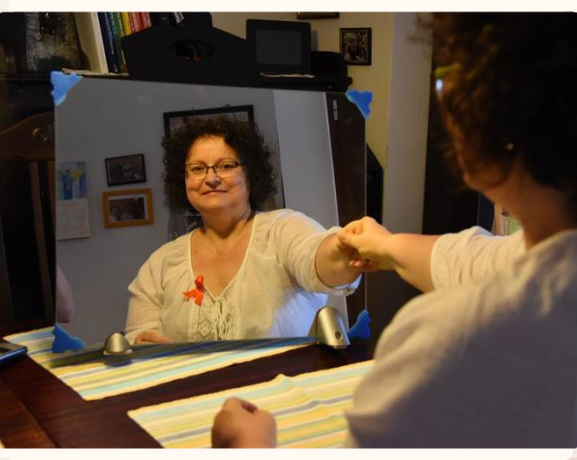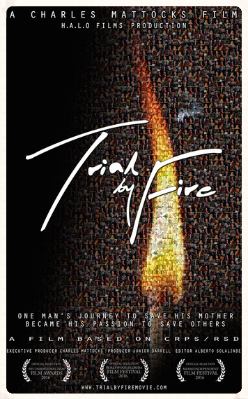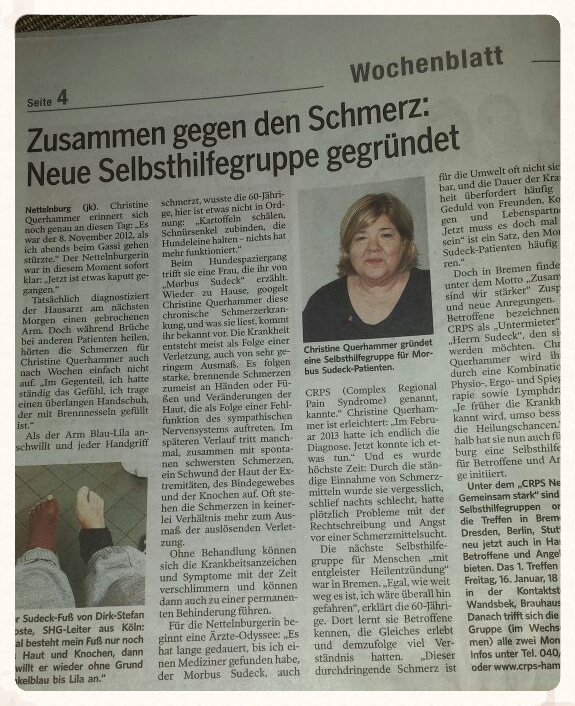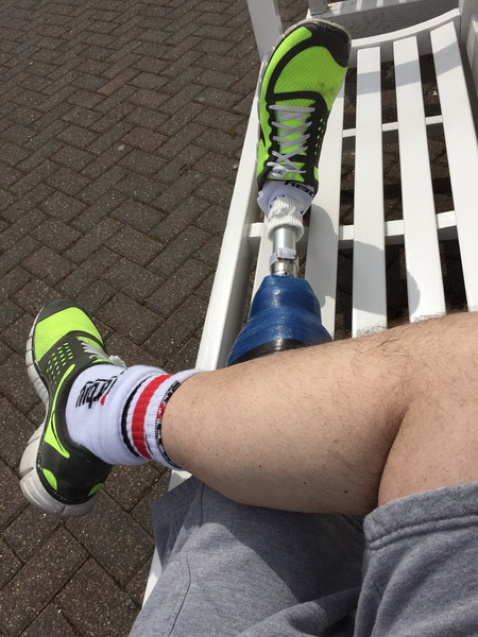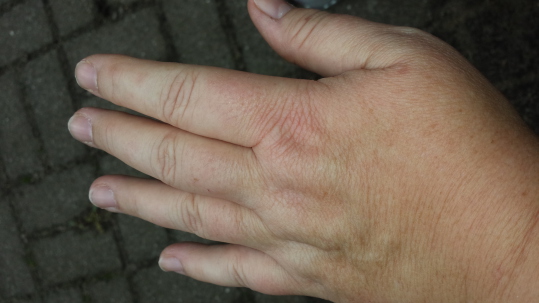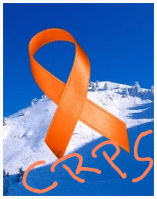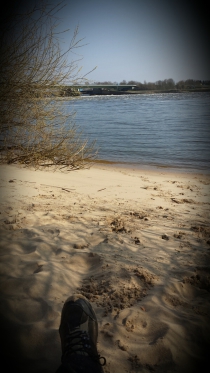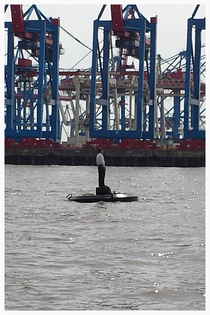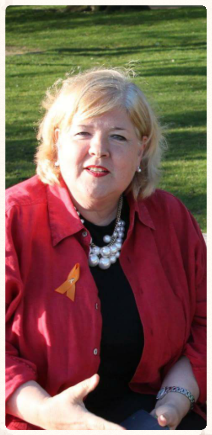
Von Petra Neumann-Prystaj
MORBUS SUDECK Marion-Sybille Burk hat Schmerzen, die nicht aufhören wollen
DARMSTADT - Es gibt für fast jede Erkrankung eine Selbsthilfegruppe, in der sich die Betroffenen und ihre Angehörigen informieren und mit anderen austauschen können. Einige dieser Gruppen und die Menschen, die sich darin engagieren, werden in einer Serie vorgestellt.
Seit Dezember 2014 leitet Marion-Sybille Burk (55) die Landesgruppe Hessen der Selbst-hilfe für die Erkrankung Mor-bus Sudeck, auch CRPS genannt (Komplexes Regionales Schmerzsyndrom).
- TREFFPUNKT
Die Landesgruppe Hessen der Selbsthilfe Morbus Sudeck kommt alle zwei Monate beim Paritätischen Wohlfahrtsverband in Darmstadt, Poststraße 9, zusammen. Zurzeit hat die Gruppe acht Mitglieder. Kontakte bestehen außerdem zu 20 weiteren Betroffenen. Infos unter Telefon 06150-97 29 95 1 im Internet auf www.crps-netzwerk.de oder per E-Mail an shg@crps-hessen.de. (pep)
Insgesamt elf Operationen an den Händen
Dabei handelt es sich um eine seltene neurologisch-orthopädisch-traumatologische Krankheit. Es begann ganz harmlos im Urlaub 2008. Marion-Sybille Burk stolperte, fiel und stützte sich mit beiden Händen ab. Sie ahnte nicht, wie folgenschwer dieser Sturz sein würde. Viermal wurde sie seither an der rechten Hand, siebenmal an der linken Hand operiert. „Alles war verschoben“, sagt sie.
Dann nistete sich der Dauerschmerz ein, und viele Untersuchungen später erfuhr sie, dass er sogar einen Namen hat: „Plötzlich ist der Sudeck da.“ Die Diagnose Morbus Sudeck wurde in der Universitätsklinik Würzburg gestellt. Sie stützte sich auf die „Budapest-Kriterien“, so genannt, weil sie 2003 in Budapest erarbeitet wurden.
Die meist chronisch verlaufende Erkrankung wurde von dem Hamburger Chirurgen Paul Sudeck (1866 bis 1945) entdeckt. Bei zwei bis fünf Prozent der Patienten mit einer Extremitätenverletzung entsteht dieses „Komplexe regionale Schmerzsyndrom“. Frauen sind häufiger als Männer betroffen.
Warum sich nach Operationen oder Verletzungen ein Morbus Sudeck entwickelt, ist unklar. Wahrscheinlich führen Schädigungen der Nervenfasern aufgrund der Gewebeverletzung zu körperlichen Fehlreaktionen.
Marion-Sybille Burk ist Apothekerin, kann aber seit der Erkrankung ihren geliebten Beruf nicht mehr ausüben. Von Morbus Sudeck hatte sie zuvor noch nie etwas gehört. Das Schmerzsyndrom tritt nach einer Operation, Entzündung oder auch Impfung auf. Erste Warnzeichen sind Durchblutungsstörungen, Ödeme, Hautveränderungen und -verfärbungen und schließlich höllische Schmerzen, Berührungsempfindlichkeit sowie Funktionseinschränkungen. Marion-Sybille Burk hat das Gefühl, dass ihr Arm brennt, Ameisen über ihre Haut laufen und sie ständig mit Nadeln gepiesackt wird.
Der Dauerschmerz belastet die Seele. „Es wird einem viel Freude genommen“, sagt die Fünfundfünfzigjährige. „Ich war immer ein optimistischer Mensch, aber durch die Krankheit wurde mir der Boden unter den Füßen weggezogen. Früher war ich von der ganz schnellen Truppe, jetzt lerne ich, meine Langsamkeit zu akzeptieren.“
Sie hat keine Kraft mehr in den Händen, kann zwar noch eine Banane in Scheiben schneiden, aber keine Möhre. „Sobald ich meine Hand belaste, bekomme ich Schmerzen.“ Das ständige Schlafdefizit und die starken Medikamente, die sie nehmen muss, machen sie müde und verlangsamen ihre Reaktion. „Man wird komplizierter“, gibt sie zu, „in manchen Dingen bin ich eine Mimose geworden.“ Die Familie unterstützt sie vorbildlich, die Söhne helfen, und den Ehemann bezeichnet sie als „Riesenhilfe“. Nicht alle Ehen halten eine so große Belastung aus.
Im Internet chattet Marion-Sybille Burk mit anderen Betroffenen, die genau wissen, wie sich der „Sudeck“ anfühlt. Sie fand heraus, dass es ein Selbsthilfenetzwerk gibt, und zunehmend gefiel ihr die Vorstellung, selbst eine Gruppe zu leiten. Wenn sie auf der helfenden Seite ist, wird sie von ihrem eigenen Leiden abgelenkt. Wie eine Mutter setzt sie sich zurzeit für eine erkrankte Sechzehnjährige ein.
Austausch über Medikamente
Bei den Treffen der Selbsthilfegruppe in Räumen des Paritätischen Wohlfahrtverbands in Darmstadt erfährt die Apothekerin, wie die anderen Patienten mit der Krankheit zurechtkommen und welchen Weg jeder für sich gefunden hat. Man tauscht sich aus über Medikamente und deren Begleiterscheinungen, die Qualität von Krankenhäusern und die Erfahrungen mit Ärzten.
Die Selbsthilfegruppe ist auch für die Angehörigen eine Anlaufstelle, denn Morbus Sudeck wirkt sich auf das Familienklima aus. Manche Patienten haben sich Hunde angeschafft – auch Marion-Sybille Burk. Sie möchten den vierjährigen „Snowi“, der das Haus hütet und sich als ihr Beschützer fühlt, nicht mehr missen.
Trial By Fire von Charles Mattdock
RSD/CRPS is a condition that needs much attention. Charles saw this dire need and wanted to contribute to getting that need filled. Charles has talked to many, heard scores of stories and
researched the condition; with this knowledge, his heart was moved to get involved and become an advocate for the condition through the love of his mother and the heartfelt for the countless others
suffering.
This moving piece takes us on a journey that will impact the perspective of how we view healthcare and the caregivers of those suffering daily. We walk with Charles as he helps his mother through her
own treatment and life changes. We will also meet others fighting to stay alive from this deadly disease. We will work to allow the film to have a voice on some of the biggest television platforms
that Charles has worked with, including CNN, Dr. Oz, The Today Show and scores more around the globe! We will fight to help this project move the health care system to figure out ways to help those
who need the funding or the health care coverage to get the needed treatment to allow them to live. We will expose what at times seems like Guineapig-type of treatments that at times can do more harm
than good. This is a story that needs to be told and this documentary will open the eyes of many around the world that never knew of this condition and bring hope to those with CRPS. Get ready for an
amazing ride of joy, hope, pain and love.
2016 Film Festival Official Selections
- Hollywood Florida Film Festival
- Charlotte Black FilmFestival
- New York Film Festival
- Miami International Film Festival
- Los Angeles CineFest
- The Online Film Festival
- Honolulu International Film Festival
- Euro Fest ...more to come!
2016 Awards
- Hollywood Florida Film Festival
*Best Director of a Documentary
*Most Impacted Topic in a Documentary
- Charlotte Black Film Festival
*Best Documentary
- Honolulu International Film Festival
*Silver Lei - Documentary
...more to come!
movie/172480999
Complex Regional Pain Syndrome (CRPS): Imagine This....
CRPS/RSD is a malfunction of one's Autonomic Nervous System.
Disclaimer: Some of this content may be sensitive to some and hard to read. If reading, please read to end. I'm not a medical professional and nothing in this article should be seen or taken as medical advice.
One day, you are just like everyone else, happy and free. You are no more at risk to chronic illness than the people around you and you have no idea how easily you can become affected by it. You live day to day without a worry in the world until some small injury, surgery, or even something as small as a spider bite, turns your world upside down. The pain leaves you baffled for days, weeks, months, more likely than not, years, as you are thrown between different doctors and specialists with no answers. As the days go by, the pain worsens, leaving you on crutches, in a wheelchair, completely disabled, and often bed ridden. Still no answers; and now a lot more is on your plate than pain alone. You begin to notice that wearing clothes is painful, your affected limbs are swelling and are purple in color as well as ice cold, you are constantly fatigued and most days can't lift your head up due to a pounding headache. This is just the beginning...
Finally, one day after searching long and hard, you find a doctor who can give you answers. A feeling of relief floods your body just for frustration and anger to flood it minutes later.
"You have Complex Regional Pain Syndrome (CRPS), otherwise known as Reflex Sympathetic Dystrophy (RSD)." Your doctor enlightens you.
First you're thinking, What the heck is that?, then, after being told that it's chronic and there is no cure, chances are you are bursting into tears. Once again, this is just the beginning. Just when you thought this doctor would be your saving grace, you're thrown into a life of undergoing treatments...many with risks, that are not covered by insurance, and don't guarantee you your life back. Since you're hopeless and feel that the quality of your life with chronic pain will not be a good one, you do whatever it takes.
Complex Regional Pain Syndrome (CRPS) and Reflex Sympathetic Dystrophy (RSD) is when your nervous system never stops sending pain signals. Your nervous system works by pain signals being sent from your brain, down your spinal cord, and out to the source of pain. With CRPS/RSD that injury, spider bite, surgery, or whatever the case may be is healed, yet due to an abnormal reflex developed in your spinal cord, the signals get caught up and never stop sending, leaving your nervous system hyperactive. Overall, CRPS/RSD is a malfunction of ones Autonomic Nervous System.
Many may hear that I'm in pain every day, hour, minute, second, but I feel that the constant burning, cutting, stabbing, and throbbing sensation that I feel doesn't completely sink in for many. Please allow me to enlighten you. Below is the McGill pain scale which is a rigorously tested pain scale by scientists. Notice that CRPS is rated as the worst pain known to man. Now try your very best to imagine that level of pain not for a split second but constantly, meaning every second of your life. On top of pain, we are faced with several side effects that can consist but are not limited to: temperature and color changes of the affected limb, headaches, fatigue, nausea, sensitivity to touch, involuntary muscle movements, depression, stiffness, etc.
I know an outsider may look at those affected and think they can't possibly be in that much pain and go about their life and appear as well as they do. I'm here to inform you that, yes, we can, and myself along with others are living proof of this. We are fighters, we are warriors. It's our reality and our norm, so we figure, why sit around and mope about it? That would do us no good and leave us more depressed than we already are. Having CRPS/RSD really proves to you that sometimes the best thing you can do for yourself is make the best out of the life you were given to live. It's not an easy task so next time instead of not believing someone affected, tell them how much you look up to them because they are one hell of a person to fight this fight everyday.
One of the worst parts about having this illness is the lack of understanding and support many get from the people around them. The being called names such as "attention seeker" and "faker". This all comes with having an invisible illness. While at times our illness becomes visible, it is not often enough for people to believe us. Below, I have attached some visible aspects of CRPS.
Although I'm showing you the ugly side to this illness, not everyone exhibits visible signs of pain and suffering. However, we all suffer from similar hardships due to the many side effects that come as "baggage" with CRPS. Let me highlight a few of the ways this beast affects us in our daily life. In the morning, we wake up to a body of aches and pains and fatigue so bad we feel like a bobble head. We rally up our strength to get out of bed and make our way downstairs to eat breakfast, but, as effortless as breakfast should be, it leaves many of us extremely weak. Then, as we are headed up the stairs to go get cleaned up, we fall down the stairs due to our body giving out on us. No worries, that is just more pain and some possible injuries, but we are tough, after all. We go to take a shower and the water hitting our skin feels like a mixture of boiling water and needles being thrown at our skin. We get dressed, and in the process turn our room upside down in hopes of finding an outfit that is bearable to wear and doesn't feel like razor blades cutting our skin. On the way out the door, we go to take a sip of water but due to the involuntary muscle movements end up wearing it. We take on the rest of our day in a similar fashion. At the end of the day, we crawl into bed, our only wish to get a good night sleep, but end up with our limbs hanging off the side of out bed in hopes of escaping the excruciating pain from our bed sheets touching them. We are left up for hours on end, most likely crying for the pain to stop so we can get some rest, and many are praying that they won't wake up in the morning to avoid doing it all over again.
Just as you can imagine, a life like this is depressing. Therefore, many of those affected suffer from moderate to severe depression, yet you rarely see them without a smile on their face. The complications and problems associated with CRPS/RSD go beyond depression, though. Many sufferers have been diagnosed with other illnesses after their diagnosis of CRPS/RSD. Several of those illnesses being associated with the Autonomic Nervous System as well, such as Postural Orthostatic Tachycardia Syndrome (POTS) to name one.
Nothing is proven and guaranteed to help this excruciating pain. The pain does not respond to medications, even things as strong as morphine. As earlier mentioned, there are treatments available but many are not covered by insurance and have several serious side effects. Several doctors are not even aware and educated on what CRPS/RSD is. This leaves sufferers with close to no hope and no options. CRPS/RSD has been nicknamed the suicide disease due to the intensity of the pain leading many to death.
Please utilize this article as a way to educate others and get the word out there that CRPS/RSD is very real and debilitating. Nobody deserves to suffer from it and I wouldn't wish it on my worst enemy. If you would like to help those affected, donate, or learn more about CRPS/RSD please visit the RSDSA's homepage.
Anna Evenosky
Übersetzung kommt, versprochen
http://www.huffingtonpost.com/bryan-cainjackson/a-pain-that-few-know_b_8975800.html
Huffington Post, thanks to the writer Bryan Cain-Jackson
Zeitungsartikel zur SHG

Wer hat das Sagen in Gerichten? ARD-Doku „Die Gutachterrepublik“ macht fassungslos

Hier geht es um eine junge Frau, die auch an CRPS Morbus Sudeck erkrankt ist.
gesendet am 15.06.2015 um 06:45 Uhr und 22.45 Uhr
Stefan's Story
Stefan Droste
Gründer des CRPS NETZWERK GEMEINSAM STARK.
http://www.zdf.de/ZDFmediathek/Zeigt-her-eure-Füße
Heute morgen um 9:00 Uhr wurde der Bericht "Zeigt her eure Füße" ausgestrahlt. Ich muss wirklich sagen, dass ich angenehm überrascht war, einen solchen Bericht über eine Amputation zu sehen. Zugegeben, daüber zu sprechen in Verbindung mit CRPS, ist eine heikle Sache. Das kurze Interview mit seinem Vater fand ich sehr berührend. Die Blicke, mit denen sich Vater und Sohn ansahen, waren sehr liebevoll. Und Stefans Lächeln sprach Bände.
Als ich Stefan das erste Mal traf in Bremen bei einem Selbsthilfe Gruppentreffen, sah ich einen jungen Mann im Rolli, der die Vision hatte, etwas Großes zu schaffen. Der Gedanke, wie die Krankheit CRPS bekannter gemacht werden kann, das war zunehmend SEIN Motor. Ein Netzwerk für alle Selbsthilfe Gruppen. Etwas, was uns unter einem "Dach" verbindet und sich wie ein Spinnennetz über Deutschland legt. DIese Idee wurde immer mehr seine Motivation, ja, er brannte dafür. Und gleichzeitig kämpfte er gegen die unerträglichen Schmerzen, die er hatte. Dann beschäftigte er sich mit dem Thema Amputation. Sein Vorhaben habe ich verstanden und unterstützt. Gleichzeitig weiß man aber nicht, ob der CRPS Schmerz"springt" und die ganze Sache ist eine unsinnige Handlung. Auch jemanden zu finden, der diese Operation macht, war wie die Suche nach der Nadel im Heuhaufen. Die Grundbedingung, ein psychologisches Gutachten, musste auch vorgelegt werden.
Nicht jeder, den Stefan kennt, teilte seinen Wunsch, sich den Fuß abnehmen zu lassen. Für einige Menschen war das eher eine Kurzschlusshandlung. Nicht für mich, weil ich ihn als einen Menschen kennen gelernt habe, der sich lange und intensiv mit dieser Thematik beschäftigt, bevor er handelt. Als der Termin ranrückte und Stefan "abtauchte" in die Klinik, warteten wir alle gespannt darauf, wie die OP gelaufen war. Der Satz: DIE SCHMERZEM SIND WEG! war wie eine Erlösung für mich. Das er sich durchsetzen konnte UND Recht hatte, das war wie ein Wunder. Ich möchte behaupten, dass es kein abwegiger Gedanke sein sollte, bei unerträglichen Schmerzen, einem Menschen den Wunsch zu erfüllen und die betroffene Extremität abzunehmen.
Hinweise---> das Foto oben im Zeitungsartikel über die Gründung meiner SHG zeigt Stefans Füße vor der Amputation.
Die Medikamentenbox auf der Seite Medikamente &Therapie zeigt Stefans Medis, die er genommen hat. Davon ist er jetzt runter auf null.
July 28, 2014 by Rachel Lutz veröffentlicht HCPLive.com
Complex Regional Pain Syndrome May Not Be Caused by Trauma
Complex Regional Pain Syndrome (CRPS) could be caused by harmful serum autoantibodies, according to research from the University of Liverpool’s Institute of Translational Medicine. The study led investigators to believe that CRPS is caused by an immune dysfunction, not abnormal brain activity after injury, as previously thought.
In cooperation with researchers from the University of Pecs in Hungary, the scientists successfully transferred antibodies from the serum of patients with CRPS to mice, where they found many of the
symptoms to be replicated in the animal models. Some of the symptoms included severe pain lasting for many years, limb swelling, hair and nail growth changes, and muscle atrophy.
“CRPS is a serious condition which isn’t fully understood,” Dr. Andreas Goebel, leader of the study, said in a press release. “The findings of this study hint at a cause for it — harmful serum autoantibodies — and raise the possibility of finding a treatment.”
To determine whether CRPS stemmed from post-traumatic experiences, the researchers established a passive-transfer model via the injections. For 8 days, the mice’s mechanical hyperalgesia, paw
swelling, heat and cold sensitivity, weight-bearing ability, locomotor activity, motor coordination, paw temperature, and body weight were monitored.
“It’s quite possible that CRPS is caused by a fault in the immune system,” continued Goebel. “This study seems to pinpoint the cause as autoantibodies, and by examining this area further we can
look to develop a cure.”
The investigators also examined mice injected with antibodies from healthy volunteers, and noted significantly fewer CRPS symptoms. In the affected mice, the paws became significantly more sensitive
to pressure as well as containing a higher concentration of the nerve-mediator Substance P.
“These results support the hypothesis that autoantibodies may contribute to the pathophysiology of CRPS, and that autoantibody-removing therapies may be effective treatments for long-standing CRPS,”
the authors wrote.
